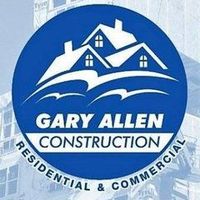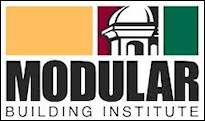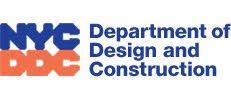Ask About Our Free Consultations & Free Estimates
Modular Homes: Where Quality Meets Innovation
Gary Allen Industries: Building Dreams, Crafting Homes
Elevate your dream home with Gary Allen Industries. As a trusted family-owned and operated company, we're your go-to experts for a range of services in Rumson, NJ, Monmouth County, NJ, and across New Jersey. From crafting eco-friendly modular homes for single and multi-family living to delivering residential remodeling that transforms kitchens, bathrooms, and adds exciting additions, our reputation in the industry speaks for itself. We take pride in our work, ensuring you get the quality and excellence you deserve. Ready to make your vision a reality? Contact us today at (732) 693-4699, and let's build the future together.
Why People Choose Gary Allen Industries
Gary Allen Industries is the top choice for those who value quality, reputation, and environmental responsibility. With a strong focus on sustainability and a history of word-of-mouth referrals, our reputation speaks for itself. We build more than just houses; we build trust. When you choose us, you're choosing a partner committed to the highest standards in the industry. Trust Gary Allen Industries to deliver not just houses but a legacy of excellence you can rely on.
A Green Builder
At Gary Allen Industries, we're leading the way in green building. Our modular construction process is not only greener but also faster and smarter. With minimized site disturbance, less material waste, and improved air quality, we're proud to create environmentally responsible homes. With construction occurring simultaneously with site work, we can reduce project timelines by 30% to 50%, weather delays are virtually eliminated, and we build to the same codes and standards as traditional construction. Our commitment to safety, advanced BIM technology, and limitless design possibilities make us your trusted choice. When it comes to green building, we're setting new standards for a more sustainable future.
Warranty
Gary Allen Industries is committed to delivering top-quality custom homes at affordable prices. With a focus on both modular homes and custom home design, they provide turnkey products that stand out in terms of craftsmanship and excellence. The company stands firmly behind its work, ensuring homeowner satisfaction.
Homeowners partnering with Gary Allen Industries enjoy the peace of mind that comes with two Homeowner Warranties. One is provided by the Modular Homes Manufacturer, guaranteeing the structural integrity and quality of the modular home. The second warranty is offered directly by Gary Allen Industries, covering the comprehensive turnkey product. This dual-warranty approach emphasizes the company's dedication to the long-term satisfaction and confidence of homeowners in their investment.
- Roof Framing Systems
- Floor Framing
- Load Bearing Walls & Partitions
- Beams, Girders
- Columns
- Footing & Foundation Systems
New Jersey Service Areas
- Monmouth County, NJ
- Ocean County, NJ
- Union County, NJ
- Middlesex County, NJ
See What Our Clients Have Been Saying!

★★★★★
Here - I’ll start with this: I am a real live person who had zero affiliation with Gary prior to working with him. How I can you tell? Poop. There. I wrote the word poop, which no one in their right mind would pay to have written in a review for them.
Ok, now that that’s out of the way - I have been looking for a contractor to help me for over a YEAR. ONE YEAR. They wouldn’t show up, they would show up and blow me off, they wouldn’t give me an estimate, they jerked me around. I sincerely thought I wouldn’t ever get my entranceway redone.
Enter Gary. He came over, looked at my plans, offered solutions, had imaginative ideas. Then he gave me an estimate that was more than fair.
Then, the workers came. ON TIME. EVERY DAY.
They cleaned. They worked. They listened to what I wanted and offered suggestions.
I picked a tile that was 10 bucks per tile, Gary caught the price and brought it to my attention so I could choose something more reasonable.
I got a leak in another part of my house. Gary sent the crew over and they found it and fixed it.
Let me put it like this: if Gary needed a kidney, I would gladly give him one. He has been reasonable, honest, thoughtful and he and his crew have been a JOY to work with.
Thank you to this company for helping me finally get my house into something that I am so proud of!!
- Janet S.
Button
★★★★★
We purchased our home from Gary Allen Modular in September 2015 and it has been a great experience. Gary and team did a great job on the house itself and are incredibly responsive to questions and follow up requests, routinely going above and beyond to make sure we are completely satisfied. Highly recommend.
- Michael B.
Button
★★★★★
I am very happy with the end result of the kitchen remodel project that Gary Allen LLC completed for me. My kitchen was totally gutted and everything brought up to code and/or replaced. The kitchen was very old so I expected some surprises when they opened the walls. I found Gary to be very fair with the cost for any extra work that had to be done. I feel that Gary genuinley cared that I got everything I wanted in my kitchen remodel and did whatever he could to give me that.
- Desiree G.
Button
★★★★★
You expect quality from a contractor. And, you hope for reliability and communication. Gary Allen delivers on all three. After going through two General Contractors, we were blessed in finding Gary.
His crew arrived every day at 8am and Gary was personally on sight every day checking progress. If something came up, he advised us of options. Whenever I told him we had a problem, he always had a solution or two or three.
The project entailed adding a new master bedroom with a walk-in closet and master bathroom, a total kitchen renovation with $27,000 of cabinetry, moving a laundry room, adding a half bath, renovating the old master bedroom and bathroom, installing a new tank less water heater, installing a new AC /Heating system with all new duct work, installing a new wood burning fireplace, and installing a 2000+ square foot paver patio. Gary Allen always provided pricing options at very competitive rates. Everything came out better than expected.
Bottom line, Gary Allen was always there. In person, by phone, by text and, by email. He always returned calls, replied to texts and emails and, never had a full voicemail box you could not leave a message in. I would never work with anyone else.!
- HU-241198961
Button
★★★★★
Just completed some repairs to roof of my home. Gary Allen's guy's did a great job and were very knowledgeable about what had to be done. The work was done on time and certainly at a fair price. Will certainly call on Gary Allen when I have home repairs needed. Also, he is a very nice guy.
- Mark
Button
★★★★★
Great company. Easy to work with, very reasonable pricing and reliable. We had our 15' by 25' decked reduced by Gary Allen, LLC. We got a great price, they showed up when promised and they did a very professional job. The team that was at our house were very cooperative, worked diligently until the job was complete and then did a great cleanup. Have recommended this company many times. Furthermore, this company will recommend what they truly believe you need not what they think they can sell you.
- The Confident Center
Button
★★★★★
I've hired this company many times and have always found the work to be excellent , well priced and done on time. I also like that the company is local. Gary, the President and CEO, is a person of integrity who always listens and if anything does go wrong will fix it immediately. They renovated a 3,000 square foot condo for me and the work looks beautiful. It was a pleasure to work with them.
- Fran C.
Button
★★★★★
Gary did extensive repairs on our Sandy damaged home: he did them on time and budget
Some of Gary's finishes were better than when we built the house!
Highly recommended: we love to work with them
- Mark R.
Button
★★★★★
Gary was a dream to work with from day one. He was forthright and answered all my questions on my initial "tell me about this process" call (unlike other companies I contacted, which, if I was lucky, would only mail me a postcard that didn't answer ANY of my questions). He made himself available to meet with us at our convenience; he was available by phone as much as possible, and when messages were left he responded promptly. He found a modular home builder that was willing to build my home to my specs, and he made sure I got the home that I wanted. He worked with our architect, dealt with the issue of my municipality's permits issuing process, and took much of the burden of a big project off our shoulders. To top it off, he's a really nice guy. I highly recommend Gary Allen Modular Homes to anyone considering remodeling or building their home.
- whydoihavetocreateanaccount
Button
★★★★★
We interviewed several builders, and upon a background check, we hired Gary Allen for our modular home construction project. Gary is detail-oriented and sensitive to customer's needs. Building a modular vs. a stick build is a dream - much faster to construct and high-quality. We started the project around late June and we were in the house by mid-October. We would recommend Gary highly!
P.S. Gary, have I told you lately that I love my house?
- karenrz
Button
★★★★★
Over the last 5 years Gary has redone our kitchen, bathroom, and basement. He also built a wine cellar (Awesome!).
Clearly we are happy with his work as we have had him come back to do more.
I highly recommend him.
- Momthebos
Button

★★★★★
Here - I’ll start with this: I am a real live person who had zero affiliation with Gary prior to working with him. How I can you tell? Poop. There. I wrote the word poop, which no one in their right mind would pay to have written in a review for them.
Ok, now that that’s out of the way - I have been looking for a contractor to help me for over a YEAR. ONE YEAR. They wouldn’t show up, they would show up and blow me off, they wouldn’t give me an estimate, they jerked me around. I sincerely thought I wouldn’t ever get my entranceway redone.
Enter Gary. He came over, looked at my plans, offered solutions, had imaginative ideas. Then he gave me an estimate that was more than fair.
Then, the workers came. ON TIME. EVERY DAY.
They cleaned. They worked. They listened to what I wanted and offered suggestions.
I picked a tile that was 10 bucks per tile, Gary caught the price and brought it to my attention so I could choose something more reasonable.
I got a leak in another part of my house. Gary sent the crew over and they found it and fixed it.
Let me put it like this: if Gary needed a kidney, I would gladly give him one. He has been reasonable, honest, thoughtful and he and his crew have been a JOY to work with.
Thank you to this company for helping me finally get my house into something that I am so proud of!!
- Janet S.
Button
★★★★★
We purchased our home from Gary Allen Modular in September 2015 and it has been a great experience. Gary and team did a great job on the house itself and are incredibly responsive to questions and follow up requests, routinely going above and beyond to make sure we are completely satisfied. Highly recommend.
- Michael B.
Button
★★★★★
I am very happy with the end result of the kitchen remodel project that Gary Allen LLC completed for me. My kitchen was totally gutted and everything brought up to code and/or replaced. The kitchen was very old so I expected some surprises when they opened the walls. I found Gary to be very fair with the cost for any extra work that had to be done. I feel that Gary genuinley cared that I got everything I wanted in my kitchen remodel and did whatever he could to give me that.
- Desiree G.
Button
★★★★★
You expect quality from a contractor. And, you hope for reliability and communication. Gary Allen delivers on all three. After going through two General Contractors, we were blessed in finding Gary.
His crew arrived every day at 8am and Gary was personally on sight every day checking progress. If something came up, he advised us of options. Whenever I told him we had a problem, he always had a solution or two or three.
The project entailed adding a new master bedroom with a walk-in closet and master bathroom, a total kitchen renovation with $27,000 of cabinetry, moving a laundry room, adding a half bath, renovating the old master bedroom and bathroom, installing a new tank less water heater, installing a new AC /Heating system with all new duct work, installing a new wood burning fireplace, and installing a 2000+ square foot paver patio. Gary Allen always provided pricing options at very competitive rates. Everything came out better than expected.
Bottom line, Gary Allen was always there. In person, by phone, by text and, by email. He always returned calls, replied to texts and emails and, never had a full voicemail box you could not leave a message in. I would never work with anyone else.!
- HU-241198961
Button
★★★★★
Just completed some repairs to roof of my home. Gary Allen's guy's did a great job and were very knowledgeable about what had to be done. The work was done on time and certainly at a fair price. Will certainly call on Gary Allen when I have home repairs needed. Also, he is a very nice guy.
- Mark
Button
★★★★★
Great company. Easy to work with, very reasonable pricing and reliable. We had our 15' by 25' decked reduced by Gary Allen, LLC. We got a great price, they showed up when promised and they did a very professional job. The team that was at our house were very cooperative, worked diligently until the job was complete and then did a great cleanup. Have recommended this company many times. Furthermore, this company will recommend what they truly believe you need not what they think they can sell you.
- The Confident Center
Button
★★★★★
I've hired this company many times and have always found the work to be excellent , well priced and done on time. I also like that the company is local. Gary, the President and CEO, is a person of integrity who always listens and if anything does go wrong will fix it immediately. They renovated a 3,000 square foot condo for me and the work looks beautiful. It was a pleasure to work with them.
- Fran C.
Button
★★★★★
Gary did extensive repairs on our Sandy damaged home: he did them on time and budget
Some of Gary's finishes were better than when we built the house!
Highly recommended: we love to work with them
- Mark R.
Button
★★★★★
Gary was a dream to work with from day one. He was forthright and answered all my questions on my initial "tell me about this process" call (unlike other companies I contacted, which, if I was lucky, would only mail me a postcard that didn't answer ANY of my questions). He made himself available to meet with us at our convenience; he was available by phone as much as possible, and when messages were left he responded promptly. He found a modular home builder that was willing to build my home to my specs, and he made sure I got the home that I wanted. He worked with our architect, dealt with the issue of my municipality's permits issuing process, and took much of the burden of a big project off our shoulders. To top it off, he's a really nice guy. I highly recommend Gary Allen Modular Homes to anyone considering remodeling or building their home.
- whydoihavetocreateanaccount
Button
★★★★★
We interviewed several builders, and upon a background check, we hired Gary Allen for our modular home construction project. Gary is detail-oriented and sensitive to customer's needs. Building a modular vs. a stick build is a dream - much faster to construct and high-quality. We started the project around late June and we were in the house by mid-October. We would recommend Gary highly!
P.S. Gary, have I told you lately that I love my house?
- karenrz
Button
★★★★★
Over the last 5 years Gary has redone our kitchen, bathroom, and basement. He also built a wine cellar (Awesome!).
Clearly we are happy with his work as we have had him come back to do more.
I highly recommend him.
- Momthebos
Button
Why wait any longer? Call (732) 693-4699 to get started on your dream home!













